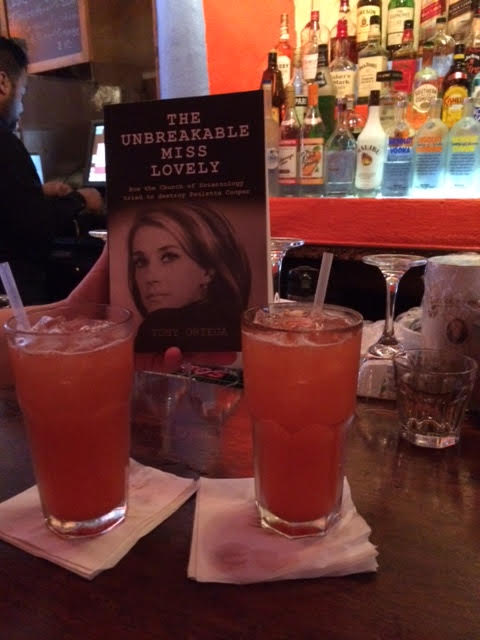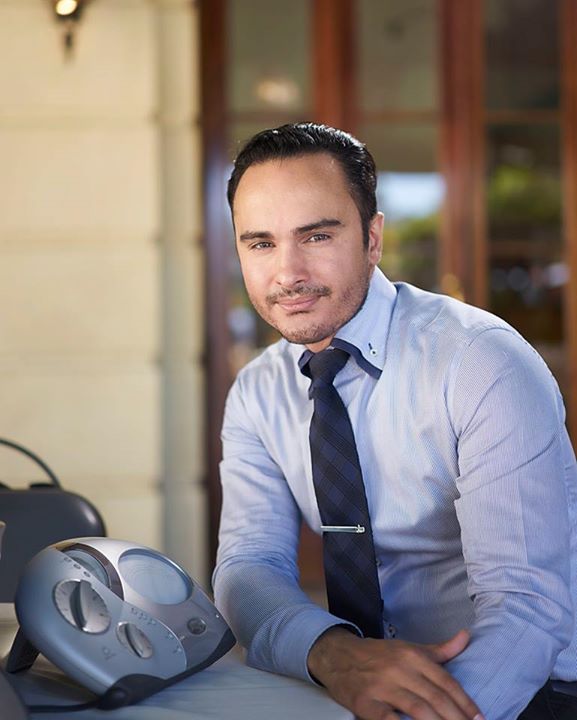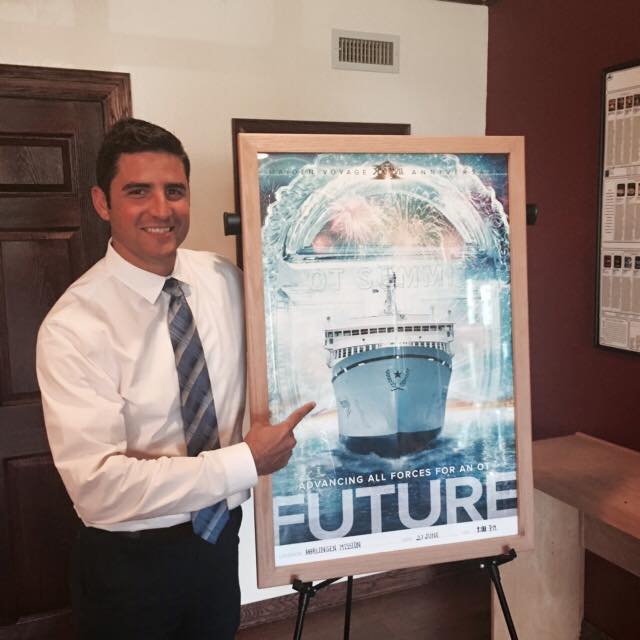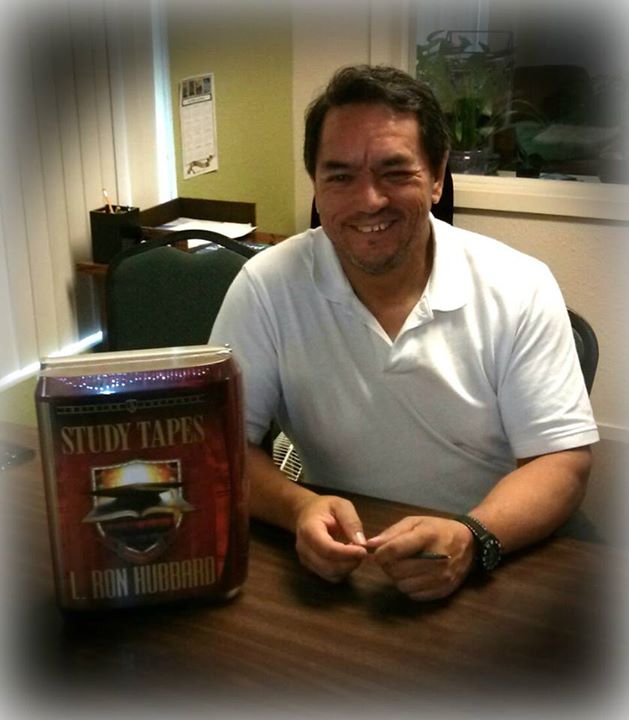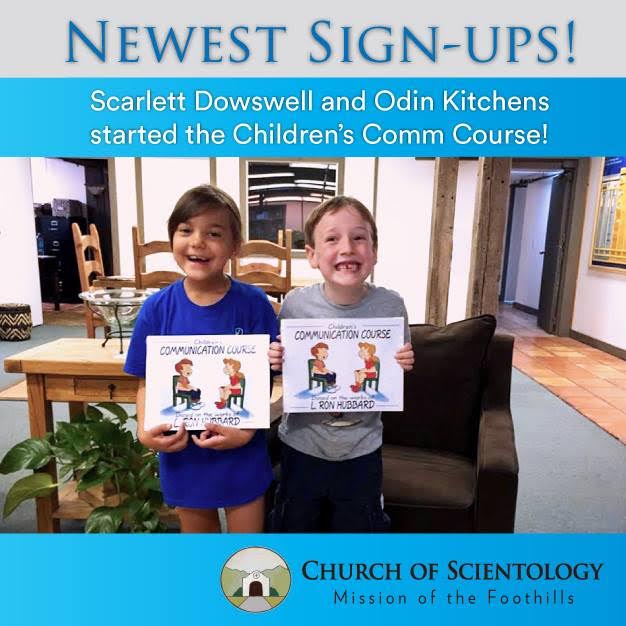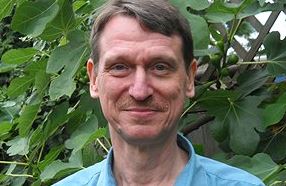 Jon Atack is the author of A Piece of Blue Sky, one of the very best books on L. Ron Hubbard and Scientology. He has a new edition of the book for sale, and for more than a year on Saturdays he helped us sift through the legends, myths, and contested facts about Scientology that tend to get hashed and rehashed in books, articles, and especially on the Internet. He was kind enough to send us a new post.
Jon Atack is the author of A Piece of Blue Sky, one of the very best books on L. Ron Hubbard and Scientology. He has a new edition of the book for sale, and for more than a year on Saturdays he helped us sift through the legends, myths, and contested facts about Scientology that tend to get hashed and rehashed in books, articles, and especially on the Internet. He was kind enough to send us a new post.
Jon, these previews you’re giving us, setting things up for the “Getting Clear” conference in Toronto, are really well put together. Once again, you’ve woven together several strands of Scientology history to make us think of things in a new light. Lay it on us…
JON: The history of any subject is vital to its understanding. Scientologists tend to have very little information about the development of their belief system and their understanding is consequently hampered. After my departure from the cult in 1983, I spent over a decade studying the history of Scientology. I read a mass of Scientology’s published materials and extracted historical references, collected thousands of pages of public record documents and gathered the accounts of about 150 people who had been involved with Hubbard from his childhood onward. This material was cross-referenced into a 400-page chronology, which was the basis for A Piece of Blue Sky.
The first stirring of Dianetics is found in Hubbard’s letters to his literary agent, Forrest Ackerman. On January 13, 1949, Hubbard wrote: “This has more selling and publicity angles than any book of which I have ever heard…” As to the benefits of his “science,” Hubbard said: “you can rape women without their knowing it, communicate suicide messages to your enemies as they sleep, sell the Arroyo Seco parkway to the mayor for cash, evolve the best way of protecting or destroying communism, and other handy house hold hints. If you go crazy, remember you were warned.”
Hubbard told various people in the late 40s that the best way to make a fortune was to start a religion. His many letters show no focus on the public good, merely how to acquire money and power for himself. I found no evidence that philanthropy was an aspect of Hubbard’s character.
In 1949, with the backing of Astounding Science Fiction editor John Campbell Jr., Hubbard settled in New Jersey with his second and (unknown to her) bigamous wife, Sara, to finish his research prior to the writing of Dianetics.
Sara was joined by two other assistants – Joseph Winter, MD, and Don Rogers – for the months leading up to the writing of Dianetics: The Modern Science of Mental Health. Dr Winter wrote two books about Hubbard and Dianetics (his Doctor’s Report on Dianetics is a must read for anyone who wants to understand the origins of the subject).
Don Rogers very kindly answered my questions in depth in a series of letters, in the 1980s. Unlike Winter, he was not disillusioned by Hubbard. He still believed in the “Tech,” more than 30 years later. Rogers had been on the board of every Hubbard foundation from the first, in 1950, through to the Hubbard Association of Scientologists International, in 1954. He left, because he felt that “black and white processing” had “cracked his case.”
Into the 1980s, D:MSMH was still printed with an appendix (the “Mind Schematic”) written by Rogers. By the time we corresponded, Rogers had lost his “wins,” but was still friendly towards Hubbard; he was also candid. He gave me the title of my book: Let’s sell these people A Piece of Blue Sky, which is what Hubbard said to him the moment before he opened the doors to the first Foundation.
The most startling piece of information Rogers gave to me was that until “Book One” was commissioned, all of Hubbard’s work used deep trance hypnosis. He told Rogers that this would be unpopular, so, without a single “research” session, he switched to the “reverie” (or “light trance”) method adapted from Freud, that is Book One Dianetics. Hubbard himself warned about the hypnotic nature of this method, in 1951, in Science of Survival: “A pre-clear after he closes his eyes will begin to flutter his eyelids. This a symptom of the very lightest level of hypnotic trance.” (Book II, p.227). This significant admission is lost on contemporary practitioners, who tend to ignore any evidence that the “Tech” is hypnotic.
Barbara Klowden (called “Barbara Kaye” in Russell Miller’s fine biography of Hubbard) gave several interviews and I have her diary entries from her time as Hubbard’s girlfriend (while he was still married to Sara). She became a psychologist after leaving Hubbard, and her diagnosis of him is consistent with those of Richard de Mille and Jim Dincalci, both of whom also qualified as psychologists after spending significant time at close quarters with Hubbard. Hubbard suffered from long bouts immobilised by morose depression, lack of self esteem and paranoia.
In 1951, after Sara filed for divorce – accusing her bigamous husband of torture – Hubbard kidnapped their baby daughter, Alexis, and fled to Cuba. He was accompanied by Richard de Mille, the adopted son and blood nephew of Cecil B de Mille, one of the pioneers of cinema.
De Mille fought his way through a mass of Hubbard dictation to create Science of Survival, How to Live Though an Executive and Notes on the Lectures (long ago, a collector played me one of the original dictation discs for SOS). Hubbard would never complete another book (so much for the inability of the Suppressive to complete a “cycle of action”!), relying briefly on Alphia Hart (Scientology 8.80) and then, for over 20 years, John Sanborn. Robert Vaughn Young had the arduous task of editing Hubbard’s rough drafts into the sprawl of Mission Earth. He told me that it was an awful job, in part because of Hubbard’s racist, chauvinist attitudes (one Native American character in a Hubbard story was called ‘Tight Pussy’).
De Mille became a professor of psychology, after leaving Hubbard, and was instrumental in exposing that sociopathic trickster Carlos Castaneda. After Blue Sky was first published, de Mille wrote to say that it was the best book on the subject, and that he especially agreed with my assessment that the only person with all the characteristics of a Suppressive Person was Hubbard himself.
Perry Chapdelaine was another early Dianeticist who worked with Hubbard. Chapdelaine still admired Hubbard and thought his ideas vital when we corresponded. He said that because he was a mathematician, Hubbard had requested his help formulating the “axioms” of Dianetics. Chapdelaine said they finished a bottle of Scotch in the process. Hubbard’s drinking was also mentioned by Klowden (a bottle of Scotch a day) and de Mille (a bottle of rum a day, in Cuba).
With Sara’s submission to his demands, after three desperate months away from her baby, and the financial support of oil man Don Purcell, Hubbard returned to the US. Purcell created the Wichita Foundation. His account agrees with many others: Hubbard spent money like water and avoided all of his many creditors (his Navy files contain desperate letters from various stores that were pursuing him, too).
Hubbard sold all of the rights to Dianetics and his original books to Purcell, because they both feared that the American Medical Association would extend the suit already brought by the New Jersey Medical Association for practising medicine without a licence. Wilhelm Reich was sent to prison for exactly this, so Purcell was attempting to protect Hubbard.
The suit failed to transpire. Dianetics went into bankruptcy, but a judge offered it wholesale to Purcell for a few hundred dollars. By which time Hubbard, in typical fashion, had fallen out with Purcell and, after acquiring the mailing list of the Wichita Foundation through his “business manager” (who had stolen it), sent out over 30 letters attacking Purcell.
On April 3, 1952, Hubbard wrote a missive from Phoenix, Arizona, headed “A Statement” in which he claimed the right to the term “Foundation” and said: “Where I am, even if I am accompanied by only a few, even if we are cut off and harassed by poverty as we now are, even though some man with power at his command threatens us all or harms Dianetics as Purcell is doing, THIS is the Foundation … I shall tolerate no monied montebank [sic] imposing on you to get your money for which in turn he has nothing to give you. Many of you are foolish and light-minded and prone to cry and moan over situations about which you have no data. Many more are so low in tone that they prefer swindlers and thieves, bogus articles and grief over and above progress and determination and honesty…’
Hubbard’s whinging was to no avail. With the loss of Dianetics, he had to create a subject out of whole cloth. He picked up the word Scientology – used variously before to describe pseudo-science and Aryan race theory – and generated a new subject, armed only with Aleister Crowley’s Magick in Theory and Practice and a couple of books on hypnosis (Twenty-Five Lessons and Hypnotism Comes of Age – he refers to all three books in the 1952 PDC lectures). Creative Processing – or hypnotic visualization – which is the core technique of the Philadelphia Doctorate Lectures, is a direct lift from Crowley (as is OT TR0 and much else – see my Possible Origins for Dianetics and Scientology).
We have the testimony of many early Dianeticists and Scientologists. Or at least, I do: some of this material has yet to see the light of day (and frankly, without assistance it may never see daylight, as I have no time to spare).
I corresponded with A.E. van Vogt for a while. He gave up his career as a leading science fiction author to practice Dianetics. He separated from Hubbard as soon as ‘past lives’ came along (in 1951). For van Vogt this was fantasy. He was still an ardent practitioner of Dianetics, 30 years later, and, sadly, really had not written any more fiction. He did, however, develop what he called the theory of the “right man” – a man who can never be wrong – based upon Hubbard’s narcissism.
Helen O’Brien was the head of the Hubbard Association of Scientologists in 1952-53. She was based in Philadelphia and so she arranged the “doctorate” course there. Ordinarily, a doctorate requires a graduate degree, a post graduate or master’s degree and two or three years of work on an original thesis – eight or nine years work, in all. For $500, Hubbard awarded a doctorate for just six weeks of listening to him talking in his usual rambling fashion.
There were only 38 people on that course, because Hubbard’s audience had shrunk that significantly. 150,000 copies of D:MSMH sold in 1950 (when the publisher, Art Ceppos, withdrew it, because he realized it was fraudulent) down to only 38 believers, in only two years.
O’Brien left a remarkable book in manuscript form. There is an abridged version in the Library of Congress. She gave me the full text, and I wept while reading it. Her partner, John Neugebauer (“Noyga”) was promised relief from his depression, but ended up taking his own life (one of many Scientology suicides). The goldfish bowl placed prominently to receive the eyeglasses that Hubbard promised PCs would no longer be needing remained empty throughout Hubbard’s stay. It is perhaps worth pointing out that Hubbard never stayed in one place for very long, which, according to his own teachings, indicates that he had to leave because of his overts or crimes. This is consistent with the historical record.
O’Brien also had Hubbard letters, including the famous 10 April 1953 missive, where Hubbard asked her opinion of the “religion angle” and said how much more money they could be making if they went in that direction (“I await your reaction on the religion angle. In my opinion, we couldn’t get worse public opinion than we have had or have less customers with what we’ve got to sell.”)
Hubbard secretly registered his Church of Scientology in Camden, New Jersey in December 1953, though he would claim that the first “church” was not his idea and had been registered by Burton Farber in California. That registration was actually made in February 1954, with Hubbard as the principal beneficiary of the “Church of Scientology of California.”
Despite Hubbard’s spiteful attacks upon him, Don Purcell donated all of the rights to Dianetics back to Hubbard in 1955. This decision is explained in The Aberree, a magazine for “independents” and ex members, run by former publications chief, Alphia Hart, and a vital source of information about the early years of Scientology.
The Aberree ran for years and contains articles by many early figures in the movement. It is noticeable that every few years the top layer of Dianetics and Scientology departed, often attempting to export the techniques.
There have been over two hundred splinter groups. Rather like in Orwell’s Nineteen Eighty-Four, the departing luminaries have been dropped down the “memory hole.” For instance, Paul Twitchell, trusted contributor to Hubbard “bulletins” created Eckankar; Harvey Jackins, one of Hubbard’s protégés, turned Dianetics into ‘Co-Counselling’; but there were many others – E-Therapy, Synergetics, Dianology and Amprinistics to name but a few.
It surprised me to realize that few of Hubbard’s chief supporters from the 1950s stayed with Scientology (I’ve commented on these pages that not one of the original 280 or so “Clears” claimed in D:MSMH ever made an appearance). Among the last to leave was probably George Hay, who invited Hubbard to make his first trip to England, back in 1951. As with most of the early Dianeticists, George showed no reverence for Hubbard. That would come after the creation of the Sea Org and the myth of the “Source,” when Hubbard dismissed the many contributions made by others (he had awarded “doctorates” for such contributions prior to the mid-60s, but this evidence has also been shoved down the memory hole).
These days, few Scientologists know that L. Ron Hubbard Jr was his father’s second in command for seven years, until he left, in 1959 (for want of money enough to support his family, he said). And surely not one Scientologists knows that the ‘Jr’ was simply removed from such issues as the “upper indoctrination training routines,” so that they were re-credited to his father. Nibs, as he was known, made many lurid allegations against his father. When I was in touch with him, I doubted every word he said, because the allegations seemed so far fetched; now, I’m not so sure. However, I used nothing that Nibs said without confirmation from another source.
I interviewed John Sanborn in LA, in the late 80s. He was head of the Scientology Publications Organization from 1954 to 1978. He told me that one day he saw how much money was being transferred into Hubbard’s private accounts and compared this to the pittance he had received in over 20 years working for “Tubby” as he called him. Sanborn was there when Hubbard dictated the “Brainwashing Manual,” which he falsely attributed to the USSR’s secret police chief, Lavrenti Beria (Beria’s authorship is impossible as the Manual mentions the “Church of Scientology” which was first registered after his death. Unless, of course, Hubbard was actually working for the Cheka and had advised Beria of his future intent…).
Sanborn told me that he had kept Hymn of Asia from publication for 20 years, because in the original it stated “I am Maitreya.” Sanborn changed the line to “Am I Maitreya?,” eventually putting the book into print in 1974. (As Maitreya will lead humanity into nirvana during his lifetime, we can answer the question “Am I Maitreya?” with a resounding “No, you aren’t!” The Book of the Great Decease, the Pali text which mentions Metteya or Maitreya does not confirm Hymn of Asia’s claims that the final Buddha would be red-headed, would be born in the West, or arise 2,500 years after the Shakyamuni Buddha).
The myth of L Ron Hubbard was created long after Scientology itself. There is a wealth of information that contradicts that myth. By the time A Piece of Blue Sky was published, in 1990, I had interviewed or read testimony by over 150 people who had known or worked closely with Hubbard. The accounts given by those around him are consistent. The only stories that conflict with those accounts are the stories told by Hubbard himself; and he frequently contradicted himself.
It is folly to put faith into a man who was a pathological liar, but it is a difficult task to put aside beliefs that you have lived by and accept that you have been gulled. Scientology is so invasive that most of us who have been subjected to it find it impossible to find any other perspective from which to objectively analyse the “Tech.” Believers become “interiorised” into Scientology. My aim has been to help them to “exteriorise” for long enough to reconsider their involvement.
When I left, I used Hubbard’s own “Data Series” to evaluate Scientology (and, yes, contrary to rumour, I took the Data Series Evaluator’s Course at Birmingham Org, in 1981). I found Scientology sorely lacking by its own Founder’s logic. I then applied the Data Series to the Data Series and the whole subject evaporated in a mist.
For me, the final proof of Hubbard’s intentions came when I collected his statements for Never Believe a Hypnotist. This is certainly no literary work, and I can only apologise for its rather ragged nature, but it contains irrefutable evidence, in Hubbard’s own words, that the Source of Scientology was an accomplished hypnotist (boasting over 20 years practice prior to Dianetics), and that he was exploiting hypnotic techniques in his work. Indeed, Dianetics and Scientology are forms of hypnotherapy, plain and simple. All forms of hypnotherapy have the risk of making fantasy seem real, and Scientology is no exception.
If there is any value in Scientology, it must be subjected to the same scientific scrutiny as other potential forms of healing. This has not been attempted since the failure of Hubbard’s only clinical trial – in Los Angeles, in 1950 (mentioned in Science of Survival and recorded in Dianetic Processing: A Brief Survey of Research Projects and Preliminary Results, published in January 1951, under the imprimatur of the Hubbard Dianetic Research Foundations). Hubbard admitted that the Hubbard Dianetic Research Foundation “undertook some tests with regard to the effectiveness of pain-drug-hypnosis and found it … appallingly destructive.” (Science of Survival, Book II, p.225). He failed to mention that this was done to prove the existence of engrams, and that none of the material implanted through “pain-drug-hypnosis” was recovered. Another piece of history lost to adherents of the cult in the rapid retreat from a “science of mental health” into a faith-based religion.
I will expand upon this sketch in Toronto at the end of the month, ably assisted by some leading figures from the Sea Org period. For details, go to the convention website.
——————–
Miss Lovely back on tour!
We filled the backroom at Selena Rose restaurant in Manhattan with about 100 people last night, many of them old friends of Paul Noble and Paulette Cooper. Paulette was in great form, and we stayed after our remarks to enjoy some food and drink with numerous Bunkerites who had made the trek — two folks even came all the way from Texas!
We were too busy to snap any photographs. If you took some, please share them with us!
——————–
Bonus photos from our tipsters
Hey, girl. Together, we can postulate anything.
Hey, girl. This barge could be our Love Boat.
Hey, girl. Let’s learn how to learn old school, with cassette tapes.
Trance states for tiny immortal beings!
——————–
BOOK NOTES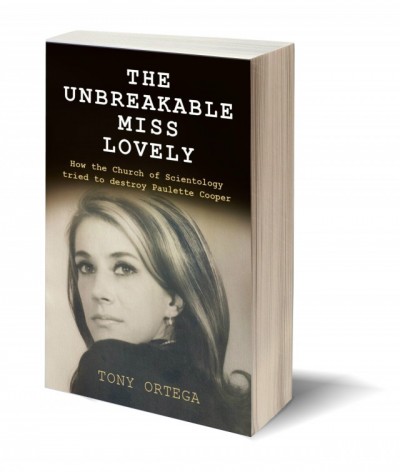
We didn’t get a chance to include photos in our book, so we’ve posted them at a dedicated page. Reader Sookie put together an index for The Unbreakable Miss Lovely and we’re hosting it here on the website. Copies of the paperback version of ‘The Unbreakable Miss Lovely’ are on sale at Amazon. The Kindle edition is also available, and shipping instantly.
Our upcoming appearances (and check out the interactive map to our ongoing tour)…
June 20: Chicago (with Christian Stolte) The Annoyance Theater, 5pm: This event is SOLD OUT.
June 22: Toronto (with Paulette Cooper) Toronto Public Library, 40 Orchard View Blvd, 7:30 pm, sponsored by the Centre for Inquiry-Canada
June 23: Toronto (with Paulette Cooper) The “Getting Clear” conference
June 28: Clearwater, Florida (with Paulette Cooper) Clearwater Public Library, 2 pm, sponsored by Center for Inquiry-Tampa Bay
July 12: Washington DC, Center for Inquiry (with Paulette Cooper)
July 14: Hartford, MARK TWAIN HOUSE (with Tom Tomorrow)
July 17: Denver, The Secular Hub, 7 pm (with Chris Shelton)
July 20: Dallas, Times Ten Cellar, 7 pm (with Robert Wilonsky)
July 22: Houston
July 24: San Antonio
July 25: Austin
July 29: Paris (with Jonny Jacobsen)
August 4: London (with John Sweeney)
August 24: Boston
September 16: Arizona State University
——————–
Posted by Tony Ortega on June 12, 2015 at 07:00
E-mail your tips and story ideas to tonyo94@gmail.com or follow us on Twitter. We post behind-the-scenes updates at our Facebook author page. Here at the Bunker we try to have a post up every morning at 7 AM Eastern (Noon GMT), and on some days we post an afternoon story at around 2 PM. After every new story we send out an alert to our e-mail list and our FB page.
Learn about Scientology with our numerous series with experts…
BLOGGING DIANETICS: We read Scientology’s founding text cover to cover with the help of LA attorney and former church member Vance Woodward
UP THE BRIDGE: Claire Headley and Bruce Hines train us as Scientologists
GETTING OUR ETHICS IN: Jefferson Hawkins explains Scientology’s system of justice
SCIENTOLOGY MYTHBUSTING: Historian Jon Atack discusses key Scientology concepts
PZ Myers reads L. Ron Hubbard’s “A History of Man” | Scientology’s Master Spies | Scientology’s Private Dancer
The mystery of the richest Scientologist and his wayward sons | Scientology’s shocking mistreatment of the mentally ill
The Underground Bunker’s Official Theme Song | The Underground Bunker FAQ
Our Guide to Alex Gibney’s film ‘Going Clear,’ and our pages about its principal figures…
Jason Beghe | Tom DeVocht | Sara Goldberg | Paul Haggis | Mark “Marty” Rathbun | Mike Rinder | Spanky Taylor | Hana Whitfield





